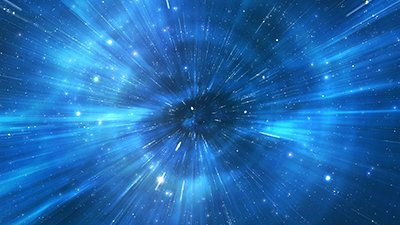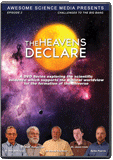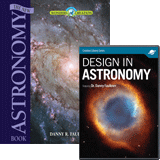Secular Alternatives to the Big Bang Are Expanding
An overview of several big bang substitutes that aim to explain the existence of everything without God—and some problems with each theory
Introduction
A 2019 New Scientist (hereafter abbreviated NS) article, “What if there was no big bang and we live in an ever-cycling universe?” generated great discussion. At first blush, one might look at the title and think that a few maverick astronomers and astrophysicists are looking to popularize some new theory. Or you may assume that it is a set-up article to tear down a straw-man and bolster the Big Bang. But in reality, the hypotheses mentioned in the article are all just recycled arguments against the current Big Bang model, which has more and more problems as new astronomical data comes in. This article, highlighting some serious problems with big bang cosmology, reads more like a desperate attempt to find anything (besides the biblical explanation of cosmic origins) to explain how our universe came to be and how the current observations can fit into a “bangless” cosmology. The primary hypothesis mentioned in the NS article is the Big Bounce, or oscillating universe, although other cosmologies are discussed at the end of the article. I have previously addressed much of this in my book Universe by Design and will use some of that material here as I address all of these in turn.
Quantum Fluctuation Theory
In his original 1973 paper on the quantum fluctuation theory for the origin of the big bang, Edward Tryon stated, “I offer the modest proposal that our universe is simply one of those things which happen from time to time.” Alan Guth has echoed this sentiment with the observation that the whole universe may be “a free lunch.” Indeed, Guth’s inflationary model depends upon a quantum fluctuation as the origin of the big bang. In the inflationary model, the universe sprang from a quantum fluctuation that was a “false vacuum,” an entity predicted by some particle physicists, but never observed. While a true vacuum is ostensibly empty, it can give rise to ghostly particles through pair production. On the other hand, a false vacuum can do this and more. A false vacuum would have a strong repulsive gravitational field that would explosively expand the early universe. Another peculiarity of a false vacuum is that it would maintain a constant energy density as it expands, creating vast amounts of energy more or less out of nothing.
In this view, the universe did not arise as a quantum fluctuation ex nihilo but instead arose as a quantum fluctuation in some other universe.
The quantum fluctuation theory of the origin of the universe has been expanded upon to allow for many other universes. In this view, the universe did not arise as a quantum fluctuation ex nihilo but instead arose as a quantum fluctuation in some other universe. A small quantum fluctuation in that universe immediately divorced itself from that universe to become ours. Presumably, that universe also arose from a quantum fluctuation in a previous universe. Perhaps our universe is frequently giving birth to new universes in a similar fashion. This long chain of an infinite number of universes is a sort of return to the eternal universe, though any particular universe such as ours may have a finite lifetime. This idea is the multiverse that has been invoked to explain the anthropic principle. In each universe, one would expect that the physical constants would be different. Only in a universe where the constants are conducive for life would cognizant beings exist to take note of such things. Thus, the selection of universes in which we could exist might be limited.
Oscillating Universe
Some cosmologists have suggested an oscillating universe to explain the origin of the universe. In this view, the mass density of the universe is sufficient to slow down and then reverse the expansion of the universe. This would lead to the “big crunch” where the universe collapses back on itself. After the big crunch, the universe would “bounce” and be reborn as another big bang. This big bang would be followed by another big crunch, which would repeat in an infinite cycle. Therefore, our finite-age universe would merely be a single episode of an eternal, oscillating universe. Some have fantasized that the laws of physics may be juggled between each rebirth.
There are several things wrong with the oscillating universe. First, the best evidence today suggests that the density parameter Ω is too small to halt the expansion of the universe. Second, even if the universe were destined to contract someday, no known mechanism would cause it to bounce. We would expect that once the universe imploded, it would remain in some sort of black-hole state (incidentally, if the big bang started in this sort of state, then this would be a problem for the single big-bang model as well). Third, there is no way that we can test this, so it is hardly a scientific concept.
Infinite Universe
What if the universe has been expanding forever?
One last attempt to explain the beginning (or non-beginning) of the universe should be mentioned. If the universe is infinite in size, then it has always been and always will be infinite in size. As the universe expands, it becomes larger and cooler, and its density decreases. What if the universe has been expanding forever? One possibility is that the physical laws that govern the universe change as the average temperature changes. This is the essence of the grand unified theory or GUT. Most physicists think that the fundamental forces that we observe today are different manifestations of a single force that has had its symmetry broken. Perhaps, they think, in much earlier times when the universe was much hotter and denser, other laws of physics totally unknowable to us were in effect. If this were true, then what we call the big bang was just a transition from a much higher density and temperature state. The big bang would have been some sort of wall beyond which we cannot penetrate to earlier times with our physics. Before the big bang, the universe would have contained unbelievable densities and temperatures, and the physical laws would have been quite foreign to us. Thus the universe has always been expanding through various transitions, and there is no ultimate beginning to explain. This, too, represents a return to the eternal universe that the big bang was long thought to have eliminated.
Steady State
Another cosmology the NS article mentions is the Steady State (Eternal Universe) model. Steady-state theorists assume that as matter spontaneously appears to maintain a constant density, negative entropy is introduced to keep the entropy state of the universe at a constant as well. According to this theory, we do not notice either the addition of matter or negative entropy because both are too small to observe on a local level. It should be emphasized that neither process has been observed; one must question them on the basis of science.
Although a minority hypothesis among astronomers and astrophysicists since the 1964 discovery of the CBR (cosmic background radiation), this does not mean that the steady-state theory has been totally abandoned. The philosophical appeal of an eternal universe that requires no beginning (and hence no Creator) is quite strong. At one time many of the proponents of the steady-state model insisted that it had to be true because it was so beautiful. The best example of a steady-state theorist is the late Sir Fred Hoyle. Hoyle continued work on a version of the steady-state model that would produce the CBR, but he did not succeed. All the while, Hoyle and others who support the steady-state theory have continued writing papers that are critical of the big-bang theory. A recent resurgence in this theory has emerged as problems with the big bang have increased.
No-Boundary Proposal
If space had a boundary, one must wonder what the nature of the boundary would be.
The next cosmology addressed in the NS article is the No-Boundary Proposal, made popular by James Hartle and the late Stephen Hawking. We’ll discuss this in a bit, but first, a brief review of a potential bound and unbound universe. Space can be bound or unbound. Being bound refers to space having an edge or boundary. In two-dimensional space, a tabletop is bound, because it has a definite boundary, the edge of the tabletop. On the other hand, a mathematical plane would be unbound, because it extends indefinitely in all directions. It is difficult to conceive of our three spatial dimensions being bound. If space had a boundary, one must wonder what the nature of the boundary would be. Would it be some sort of wall that would forbid us to cross? If so, of what would the wall be made, and why could we not cross it? Would there be another side, and if so, what would it be like and could anything pass through the wall? If these sorts of questions had any real answers, then it would seem that the other side of the boundary is part of our universe as well, so the wall is not really an edge after all. On the other hand, a universe without a boundary would seem to extend forever and would thus be infinite in size. As difficult a concept that a bound universe may be, a universe that has no spatial end is scarcely easier for the human mind to comprehend.
So we seem to be stuck with the choice between an infinite and unbound universe and a finite and bound universe. Is there a way past this dilemma? Yes. According to general relativity, space may have some overall curvature. It is possible that space may curve back upon itself so that it has no boundary, but it is finite in size. Consider a two-dimensional example. A flat, two-dimensional object, such as a piece of paper, is usually finite in size and has a boundary. On the other hand, the surface of the earth is two-dimensional, but it is curved back onto itself. Therefore, the surface of the earth has no boundary or edge, but it is finite in size. If you traveled in a straight line on the earth’s surface, you would eventually return to your starting point. In like fashion, if the universe is closed back on itself and if you traveled in a straight line, you would eventually return to your starting point. Such a universe would be finite in size and unbound, and thus we could avoid both an infinite universe and a bound universe.
The Hartle-Hawking No Boundary Proposal is a different twist on big bang cosmology. In general relativity, space and time are treated similarly in a four-dimensional space. But quantum mechanics suggests that time loses meaning in an interval shorter than 10-43 seconds, becoming like the other three spatial dimensions. Consequently, time has no meaning in the first 10-43 seconds after the big bang universe, leaving the big bang unbound in time. This leaves the origin of the big bang meaningless.
Antimatter Universe
The next secular cosmological proposal discussed in NS article is the Antimatter Universe proposed by Latham Boyle and Neil Turok. This is an alternative to the no-boundary proposal. It postulates that our universe came into existence at the big bang paired with a sort of mirror-image universe. Unlike our universe, the mirror-image universe is dominated by antimatter, and it expands backward into time.
String Gas Cosmology
The NS article next mentions the String Gas Cosmology proposed by Cumrun Vafa and Robert Brandenberger. The most popular theory of elementary particles today is string theory, which posits that particles are vibrations, like vibrations on a string, hence the name. A variation on string theory is superstring theory, a combination of string theory with gravity via a concept called supersymmetry. The string gas cosmology suggests that a dense gas of superstrings came first, from which the universe sprang.
Change of Phase
The final cosmology mentioned in the NS article is the Change of Phase proposal formulated by Daniele Oriti, Lorenzo Sindoni, Edward Wilson-Ewing, and Steffen Gielen. One speculative view of physics is that space and time (or space-time) consists of tiny particle-like bits. Just as atoms or molecules organize themselves into three phases of matter (solid, liquid, and gas), perhaps the particles of space-time condensed to produce the universe.
Final Thoughts
The crux of the issue is the origin of everything.
It seems that cosmological speculations are getting ever wilder. Why is this? If the big bang is such a well-established model, as is so commonly claimed, then there would be no need for such fanciful ideas. The proliferation of these schemes indicates that there are major problems with the big bang. The crux of the issue is the origin of everything. There simply is no physical, natural explanation for the existence of the universe. That is, scientists today are increasingly confronted with the fact that there is no scientific explanation for ultimate origins. How much more rational it is to accept that “In the Beginning, God created the heavens and the earth.” But that would cause men to realize that our Creator could place demands upon our lives. It is not in our sinful natures to submit ourselves to God. Therefore, unregenerate men must concoct all manner of futile ideas to avoid this confrontation with their Creator God.
Recommended Resources

Answers in Genesis is an apologetics ministry, dedicated to helping Christians defend their faith and proclaim the good news of Jesus Christ.
- Customer Service 800.778.3390
- © 2024 Answers in Genesis







